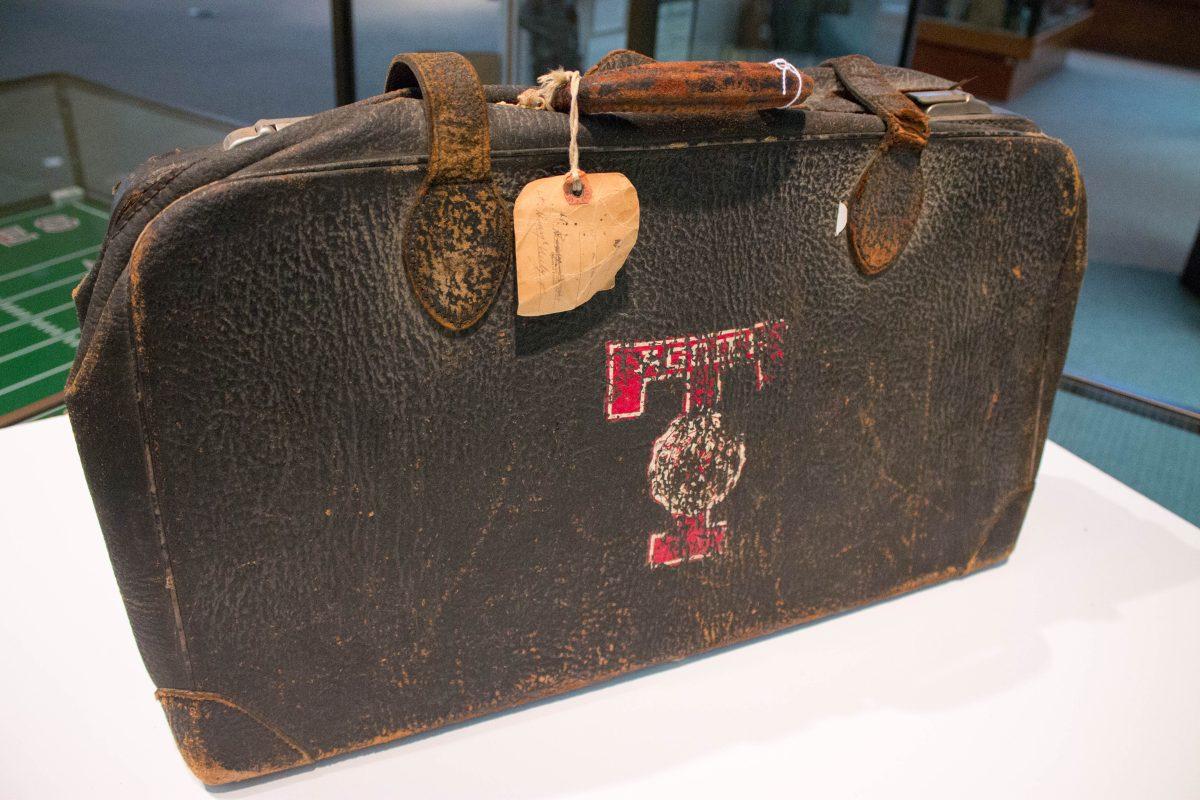Although it has always been slightly dangerous to pick up hitchhikers, Aggie Bags were once a way for students to carry their belongings while also indicating that they were respectful people looking for a ride.
In the early days of Texas A&M, students used these bags to hitchhike to their destinations. According to Lisa Kalmus, who works in the Sanders Corps of Cadets Center with aged Aggie Corps items, using homemade bags with the A&M logo painted on them was a common practice that can be dated all the way back to the ‘40s. Kalmus said the goal of using the bags was to grab the attention of drivers who passed by in order to help students hitchhike to their destination. Kalmus noted that the term ‘Aggie Bag’ has no specific meaning: Students would carry anything from a small duffel bag to a satchel to a simple zip-top duffel sack and would either paint or tape the A&M logo on the outside.
Using Aggie Bags has not been traced to one origin date, but according to the Curator of the Office of the Commandant, the practice was in full swing around 1942.
“Hitchhiking was so much about going on a Corps trip: If the football team was playing out of town or if they were just traveling for other reasons, like for short visits, this was a way for them to get around,” Kalmus said. “People didn’t have cars the way we do now. It was either travel by foot, by train or hitchhike. For most cadets, it was a way of life.”
Cadets would line up on the side of the road in the order of who arrived first, rather than classification, sticking their ‘Aggie Bags’ held out. Bags were packed very light so they did not impose or take up room that could be used for other hitchhikers. When a car approached them, the person at the front of the line would respectfully ask where the driver was headed and how many hitchhikers he could take, Kalmus said.
These hitchhiking cadets lived by a code of conduct and ethics, according to Kalmus. The A&M handbook for freshman ‘The Cadence’ in 1942 said “a cadet was expected to be friendly, to help out and to always thank the person for giving them a ride.”
“They were held to a standard even when they were traveling on their own,” Kalmus said. “As a cadet, they were a representative of the college and therefore they were expected to put their best foot forward.”
Manuel Piña Jr., associate professor in the Department of Agricultural Leadership, Education and Communications in the College of Agriculture and Life Sciences, said he did around eight to ten hitchhikes during his time at A&M.
Trying to get back to his hometown, Piña said he took four different rides from before making it to his home to his front door.
“My hometown was Melvin, Texas and our farm ranch was five miles south,” Piña said. “I had a Corps buddy take me out to Highway 21 and the first ride took me to Rockdale. The gentleman was a farmer in the area and he bought me ice cream in Rockdale and then took me to the city limits to catch my next ride.”
Piña continued his journey home, catching several different rides from a wide array of people, including roadtrippers on a joyride to a couple trying to make it to their grandson’s football game.
Although Piña was traveling by himself, his Aggie Bag held him to a the standard of being respectful, friendly and grateful.
“The Aggie Bag told everyone who we were,” Piña said. “That we were students and they trusted us.”
Pete Hunter, grandfather of Battalion Managing Editor Gracie Mock, said he experienced this respect and trust first hand when he picked up two A&M students in 1963 from Little Rock, Arkansas.
“I saw these two people in uniforms down the road and it dawned on me, ‘Those are Aggies,’” Hunter said. “I drove back around and picked them up and told them, ‘Well I can get you within 30 miles to College Station’ and they didn’t believe they could make back to Aggieland that fast. They helped me drive home. We had about another 350 more miles to drive and when I dropped them off, they caught a ride almost before I left them.”










